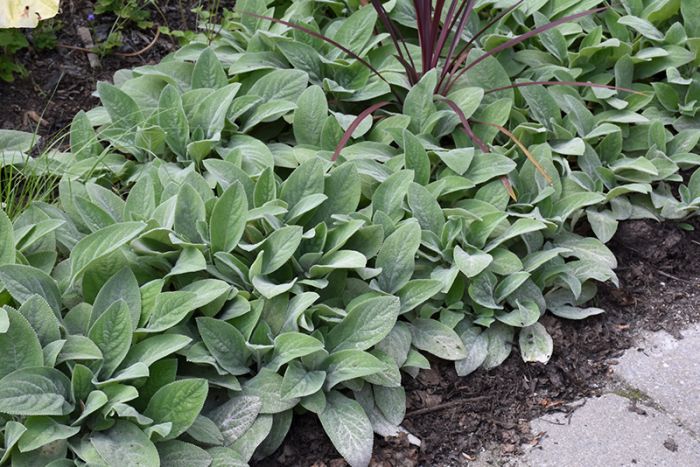Deer and Rabbit Resistant Plants
Deer and rabbits are lovely animals to gaze at from afar but not so lovely as they graze at your garden buffet. Gertens Experts provide a list of plants that they are less likely to eat!



Out of stock
Coming soon, still growingThis cultivar produces leaves twice the size of regular lamb's ear; silvery green foliage is extremely soft and touchable; few flowers
Discover an unparalleled selection of perennials at Gertens! With the largest variety in Minnesota, we offer endless options of colorful perennials, natives, and pollinator plants to beautify your garden year after year. From vibrant flowers to lush foliage, our perennials are perfect for adding beauty and charm to your outdoor space. Visit Gertens today and see why we're known as Minnesota's Destination Garden Center!
Height: 12 inches
Spacing: 18 inches
Sunlight: ![]()
![]()
Hardiness Zone: 4a
Other Names: Lambs Ears, Helene Von Stein Lamb's Ears
Description:
This cultivar produces leaves twice the size of regular lamb's ear; silvery green foliage is extremely soft and touchable; few flowers
Ornamental Features
Giant Lamb's Ear's attractive large tomentose oval leaves emerge silver in spring, turning grayish green in color throughout the season. It has masses of beautiful spikes of pink flowers rising above the foliage in early summer, which are most effective when planted in groupings. The fruit is not ornamentally significant.
Landscape Attributes
Giant Lamb's Ear is a dense herbaceous perennial with a mounded form. Its relatively coarse texture can be used to stand it apart from other garden plants with finer foliage.
This is a high maintenance plant that will require regular care and upkeep, and should only be pruned after flowering to avoid removing any of the current season's flowers. It is a good choice for attracting bees to your yard, but is not particularly attractive to deer who tend to leave it alone in favor of tastier treats. Gardeners should be aware of the following characteristic(s) that may warrant special consideration;
Giant Lamb's Ear is recommended for the following landscape applications;
Planting & Growing
Giant Lamb's Ear will grow to be about 12 inches tall at maturity, with a spread of 24 inches. When grown in masses or used as a bedding plant, individual plants should be spaced approximately 18 inches apart. Its foliage tends to remain dense right to the ground, not requiring facer plants in front. It grows at a fast rate, and under ideal conditions can be expected to live for approximately 10 years.
This plant does best in full sun to partial shade. It prefers to grow in average to dry locations, and dislikes excessive moisture. It is not particular as to soil type or pH. It is highly tolerant of urban pollution and will even thrive in inner city environments. This is a selected variety of a species not originally from North America. It can be propagated by division; however, as a cultivated variety, be aware that it may be subject to certain restrictions or prohibitions on propagation.
| Common Family Name | Lamb’s Ear |
|---|---|
| Gerten Grown Plants | Gerten Grown Plants |
| Available for Pre-Order | No |
| Sun Preference | Full-Sun, Part-Sun |
| Bloom Time | July |
| Mature Spread (Range) | 12" - 24" |
| Mature Height (Range) | 7-12" |
| USDA Hardiness Zone | 4, 5, 6, 7, 8, 9 |